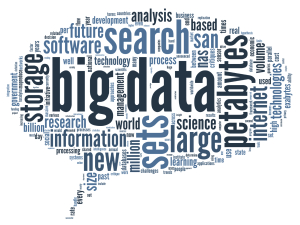The Good News: It’s Not as Scary as it Seems
Cave-dwelling Luddites aside, all of us today are inundated with talk of Big Data and the myriad ways it’s going to change our lives.
Less well understood, however, is how organizations – particularly budget-conscious, technology-strapped nonprofits – are supposed to squeeze all that ‘big’ into their existing operations.
After all, when you start talking about tera (or even peta) bytes of structured and unstructured data from multiple channels, devices, organic and third-party sources, it’s enough to leave a nonprofit manager clinging wistfully to a tattered piece of direct response or a shrinking email list.
 We get it. Big Data – both in size and scope – is a lot to swallow. Which is why, in the words of Guidestar CEO Jacob Harold, we urge our clients to parse it down into more digestible volumes of “medium data.”
We get it. Big Data – both in size and scope – is a lot to swallow. Which is why, in the words of Guidestar CEO Jacob Harold, we urge our clients to parse it down into more digestible volumes of “medium data.”
Indeed, the data challenges of the nonprofit organization are not those of their for-profit counterparts. And in many ways, data actually is more conducive to the nonprofit environment.
Why? For the simple reason that nonprofits are all about mission, content, story. Story is the product of the nonprofit, that ‘thing’ it must sell if it is to generate donations, advocates, volunteers, and other means of support.
These constituencies are the audience for that story. Which is why constituent data – when properly captured, synthesized, and aligned across the nonprofit organization – is an immensely powerful asset whose potency only intensifies as more data is added. In other words, the more a nonprofit understands about its audience, the better able it is to create a meaningful relationship between mission-story and audience.
As Harold notes, ultimately data is “simply organized storytelling – and if there’s one thing nonprofits do well, it’s tell stories about the need in our communities.”





Leave a Reply